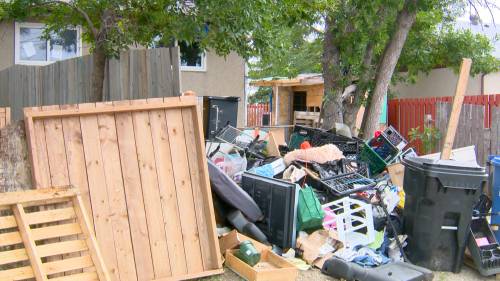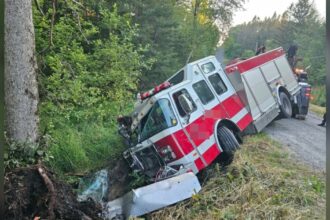A residential property in northeast Calgary’s Marlborough community has become the focal point of growing neighborhood unrest, with residents reporting a troubling pattern of suspicious activities, property damage, and heightened safety concerns.
The house, which neighbors describe as a “problem property,” has generated dozens of complaints to local authorities over the past several months. Residents report observing frequent late-night visitors, unusual activity patterns, and concerning behaviors that have fundamentally altered the community’s sense of security.
“What was once a quiet family street has become a place where parents hesitate to let their children play outside,” said Michael Jennings, who has lived in Marlborough for over a decade. “The constant flow of strangers at all hours creates an environment where we no longer feel safe in our own neighborhood.”
Calgary Police Service confirmed they have responded to multiple calls at the address, though they declined to provide specific details about ongoing investigations. City bylaw enforcement has also been involved, addressing complaints about property maintenance violations, noise disturbances, and other municipal infractions.
The situation represents a growing challenge for urban communities across Canada, where problem properties can significantly impact neighborhood stability and property values. According to urban planning experts, a single problematic residence can affect the perceived safety and desirability of an entire street or block.
Ward Councilor Jasmine Rodriguez told CO24 News that the city is developing a more coordinated approach to addressing these situations. “We’re working to strengthen the collaboration between police, bylaw enforcement, and social services to more effectively address these complex situations that impact community well-being,” Rodriguez said.
For property owners like Sarah Malhotra, who lives adjacent to the house in question, the impacts have been direct and costly. “I’ve had to install security cameras, replace damaged property, and deal with constant stress about what might happen next,” Malhotra explained. “It feels like we’re prisoners in our own homes.”
Community advocates are calling for faster intervention in cases where properties become centers of persistent problems. The Marlborough Community Association has organized neighborhood watch initiatives and regular meetings with law enforcement to address residents’ concerns.
Calgary’s municipal politics have increasingly focused on neighborhood safety and property standards enforcement as similar situations have emerged in other communities across the city. City officials indicate they are reviewing enforcement mechanisms that would allow for more decisive action when properties become persistent sources of community disruption.
The Marlborough situation raises important questions about the balance between property rights and community welfare. As urban centers across the country grapple with similar challenges, how can municipalities create systems that respect individual rights while effectively protecting the collective interests of established neighborhoods?

























